In this Montreal Travel Guide, I will tackle a city that has existed since the inception of Canada, itself.
Still relevant, MTL has stood the test of time by embracing its diversity through multiculturalism; a flawless fusion of historic, European architecture and New Age society.
“Keep Calme et Franglais on!”—a Montrealer’s reality, despite a reputation for being cold to those who do not speak the native tongue.
If Canada is cool then Montreal is the chill-est. Très, très, chill. That was lame but MTL is a dope city, I mean, weed is legal here.
Montreal touts exhilarating festivals, delicious food, gay rights, gorgeous architecture, rich history, sports galore, large green spaces, intellectuals, smooth jazz, hilarious comedy, and interesting acrobats/entertainers.
With this in-depth and comprehensive Montreal travel guide, you will be ready to undertake the island metropolis of the Quebec province from top to bottom—on a budget.
I will cover everything you need to know about backpacking Montreal, such as travel costs, where to stay, what to do, nightlife, and more!

A new country, a new contract, a new piece of plastic – booooring. Instead, buy an eSIM!
An eSIM works just like an app: you buy it, you download it, and BOOM! You’re connected the minute you land. It’s that easy.
Is your phone eSIM ready? Read about how e-Sims work or click below to see one of the top eSIM providers on the market and ditch the plastic.
Grab an eSIM!Things To See & Do in Montreal
1. Le Mont-Royal
Locally known as “The Mountain,” Mount Royal consists of three peaks on a volcanic-related hill. Montreal’s name was actually christened from Mount Royal, itself. Situated in the middle of town, make your way up the hill for the best angles and panoramic views of La Metropole. En route to the top, be sure to catch a glimpse of the iconic illuminated cross.
Parc du Mont-Royal, which is found on the mountain, is one of Montreal’s largest greenspaces. The originator of Mount Royal Park, Frederick Law Olmsted, is also noted for co-designing Central Park in New York City.
Although, Olmsted’s plans were not fully brought to fruition here in Quebec. His vision aside, there is plenty to do and see in this immense urban playground.
Gaze at the city from the Mount Royal Chalet (Kondiaronk Belvedere lookout); join the tam-tam jam (hand drums); in the winter sled, ski, skate Beaver Lake, and snowshoe; or visit the slopes that are home to Saint Joseph’s Oratory, McGill University, or Université de Montréal.

2. La Biosphère de Montréal
An iconic architectural landmark and environment museum, the Biosphere is a futuristic, geodesic dome. Originally, it took shape as the United States Pavilion at Expo 67 built by Buckminster Fuller.
Through interactive exhibits and scientific events, the Biosphere addresses many environmental issues related to air, water, energy, climate change, and sustainability; while encouraging the public to live as eco-citizens.
This spectacular sphere comes to life at night with a lighting display that changes through the seasons.
Located at Parc Jean-Drapeau on Saint Helen’s Island, admire this piece of public art before then taking a closer look. Admission fees are $10 for students and $15 for adults.
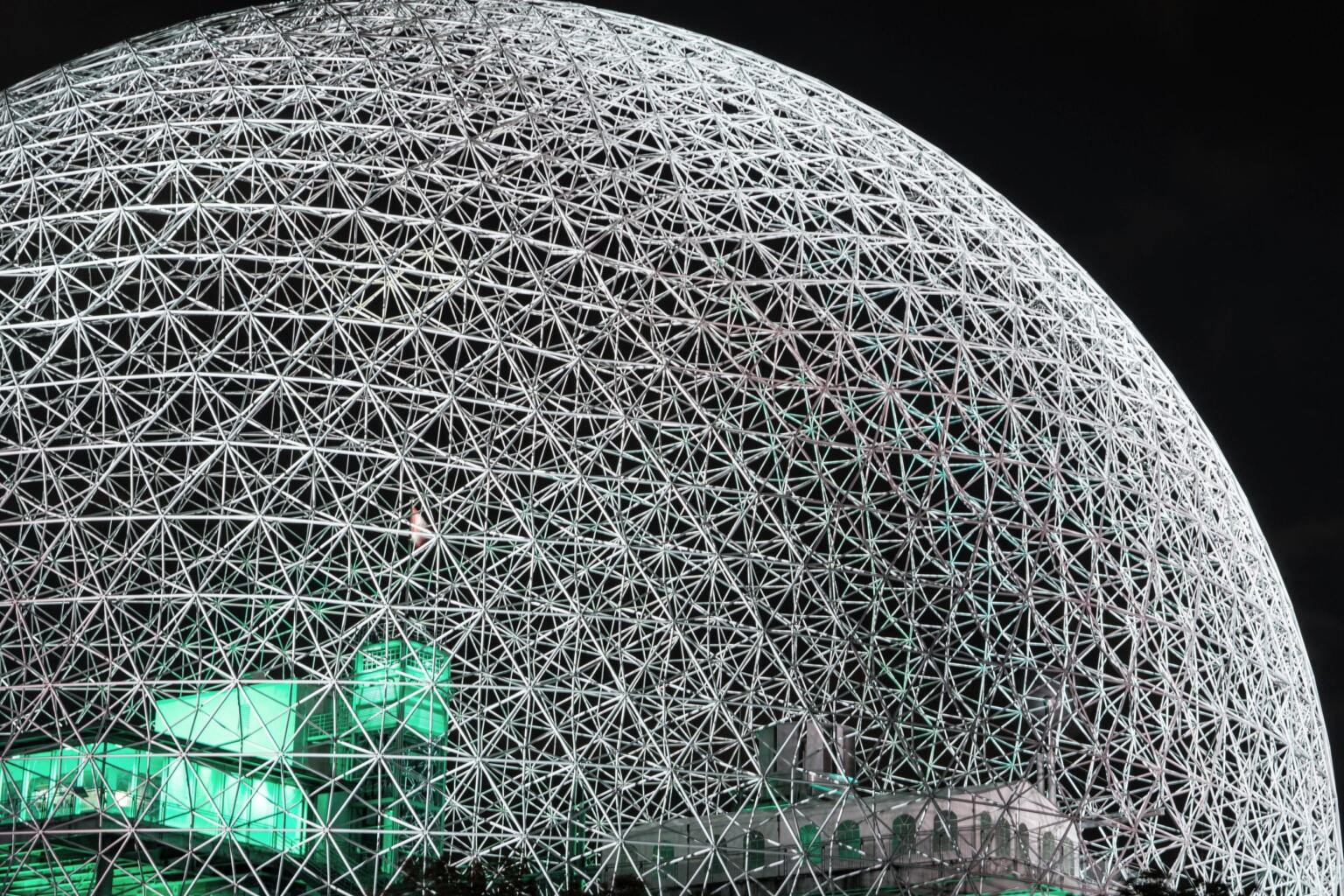
3. Parc Olympique
The Olympic Park is a district in Montreal that is composed of 4 of the city’s main attractions, the Olympic Stadium, Insectarium, Jardin Botanique, and Biodôme (not to be confused with [see above] Biosphere).
These sites can all be visited in one trip, but it is recommended to allow yourself at least 4 hours.
Built for the 1976 Montreal Summer Olympics and nicknamed “The Big O”, The Olympic Stadium is certainly a structure to marvel at.
Take a funicular to the top of the Olympic Tower—the world’s largest leaning structure, for breathtaking city views. The area surrounding the stadium has become a concrete playground for many action sports enthusiasts.
Nature meets the city at the largest museum devoted to insects in North America at the Montreal Insectarium. Sometimes you are given the chance to eat insect-based dishes—yuck! Ticket prices vary throughout the year but admission does include the Botanical Garden.
A peaceful oasis from the city, in the city, Montreal Botanical Garden is stunning. Featuring themed gardens and 22,000 plant species, this is also home to a Chinese lantern festival each autumn.
Originally constructed as a velodrome (an arena for track cycling) for the Olympic Games, The Montreal Biodome allows visitors to walk through impressive replicas of four ecosystems. Temporarily closed for major renovations, Biodome is scheduled to reopen in summer 2019.
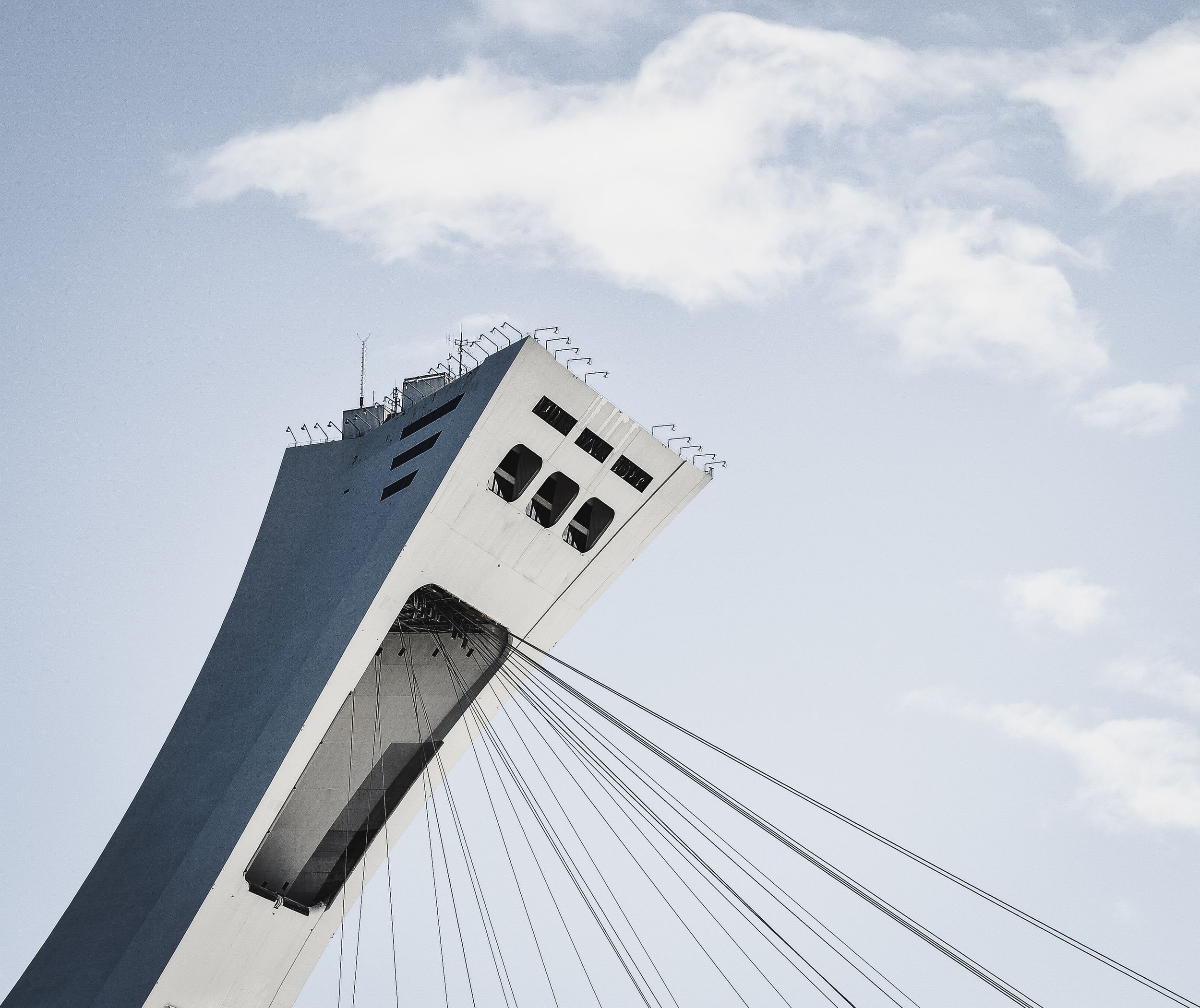
4. Vieux-Montréal
The 17th-century settlement of Old Montreal is a neighborhood with structures dating back to the era of New France. The neighborhood lies within the borough of Ville-Marie in the center of the city.
Being one of the oldest urban areas in North America, Old Montreal makes for an interesting hybrid of contemporary life and historic beauty.
Wander the charming cobblestone side streets like Saint-Paul Street, and step inside the modern boutiques that are housed in gorgeous antique structures.
Top choices for Old Montreal: Place Jacques-Cartier, Basilique Notre-Dame, Bonsecours Market and Notre-Dame-de-Bon-Secours Chapel (Montreal’s oldest chapel), Pointe-à-Callière Museum, Château Ramezay, Hôtel de Ville de Montréal, Vieux Séminaire de Saint-Sulpice, Saint Jacques Street which is lined with old bank buildings like the Old Royal Bank Building, and Vieux-Port.

5. Vieux-Port de Montréal
The historic Old Port stretches over two kilometers on the St-Lawrence River in Old Montreal. Dating back as early as 1611, French fur traders used the port as a trading post.
Today, Montrealers and visitors flock to the shores of the St-Lawrence for a variety of activities.
View the Clock Tower and lounge on the urban beach called Plage de l’Horloge; go fish at one of the most famous spots in Montreal during any season; check out the Montréal Science Centre with an IMAX Theatre; attend the many cultural events and festivals in the area; walk, cycle, or even Segway along the riverfront; and of course, relish the views from the Old Montreal Ferris Wheel.
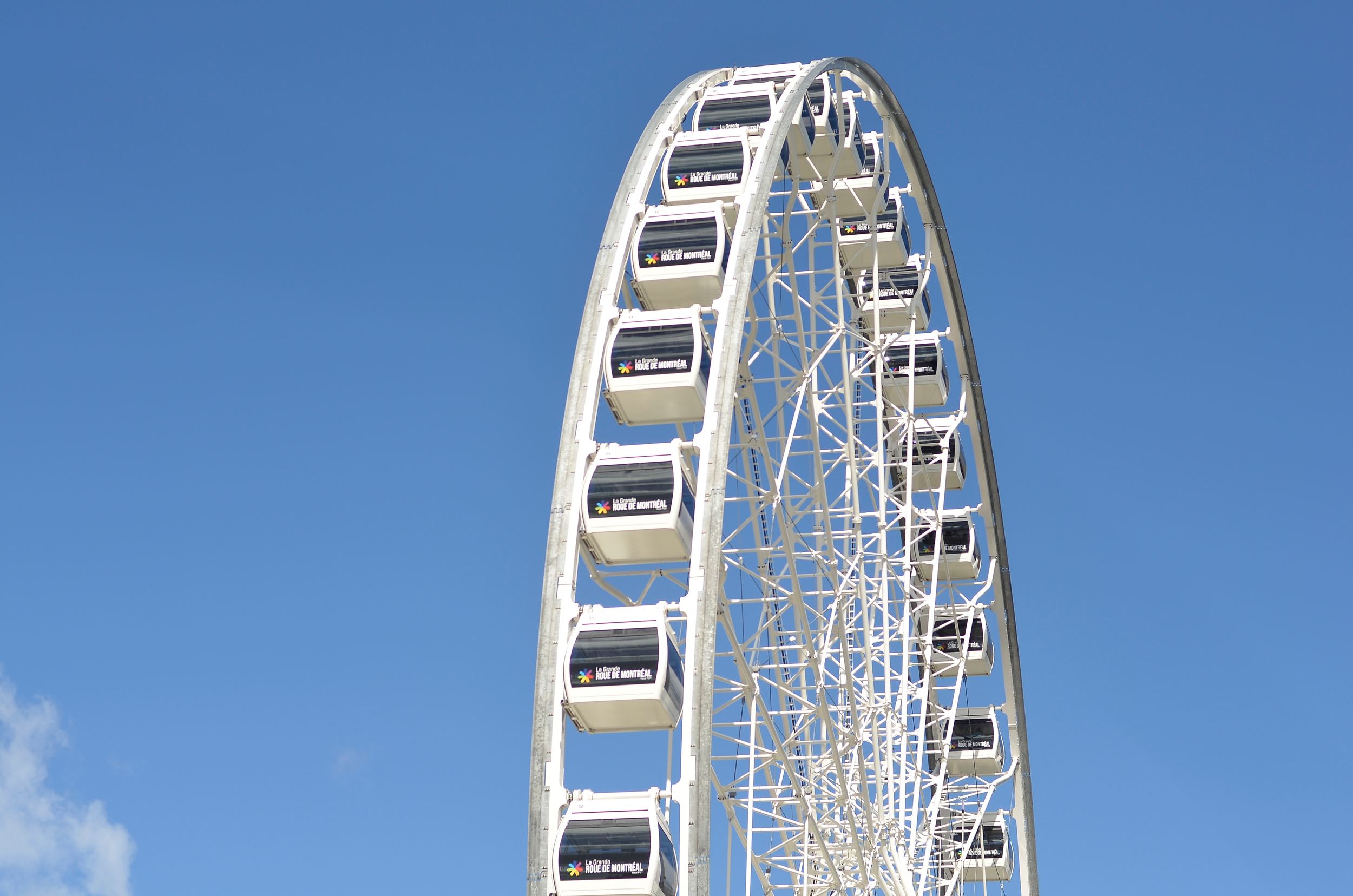
6. Place Jacques-Cartier
Place Jacques-Cartier is a public square and the entrance to the Old Port of Montreal. Deriving its name from Jacques Cartier, an explorer who claimed Canada for France in 1535, the square shows its honor.
A major gathering place and site for entertainment, Jacques Cartier square was once a public market. Nelson’s Column, Montreal’s oldest public monument has roots here.
A car-free zone in the summer, it is easy to stumble upon a restaurant with Parisian-style terraces to enjoy a bite to eat. Many street artists and musicians set-up shop in this quaint little area.
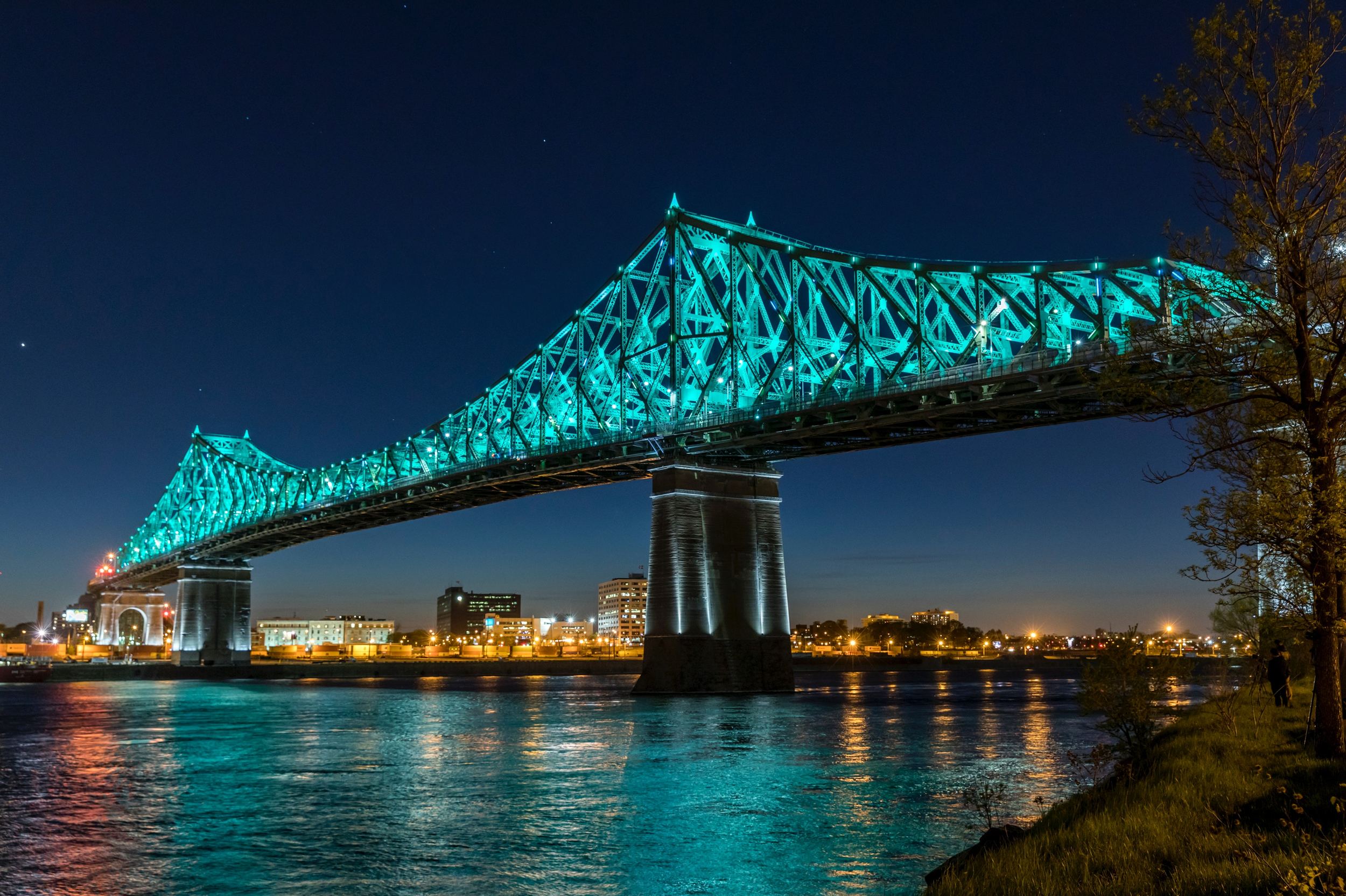
7. Notre-Dame Basilica
The city’s most spectacular church, Notre-Dame Basilica, serves as a testament to Quebec’s religious heritage, and it is an important art piece that represents Gothic Revival architecture.
Spectacular and highly decorated, the stained glass windows depict scenes from Montreal’s religious history as opposed to standard biblical ones. Built between 1824 and 1829, the church’s dual towers stand reminiscent of Notre-Dame-de-Paris.
An $8 admission fee is charged unless you are there to attend mass. Be respectful and note that photographs are not to be taken during services.
Aura, a luminous experience with orchestral music reveal the wonders of the basilica every evening for about $25.

8. Montreal’s Must-Try Treats
Montreal’s culinary scene is well-known; it is jam-packed with evolving restaurants and unique dishes. Truly, you can find a delicious meal no matter what your taste. However, a trip to MTL is not complete without trying some of the most iconic Québécois staples. Give these a go:
Poutine — French fries, gravy, and cheese curds are the perfect combination that officially mark this as Canada’s National Dish! La Banquise is among the most popular places to enjoy poutine, it helps that they are open 24hrs, but most eateries will serve this Canadian grub.
Smoked Meat — Tender Montreal smoked meat served on a sandwich with mustard is to be tasted at Schwartz’s Deli. This 90-year-old famous deli is no-frills but packed with celebrity endorsed foodie goodness.
Bagels — A Montreal-style bagel outshines New York’s doughy delight. Compare the two most well-known bagel shops Fairmount Bagel versus St. Viateur, and be sure to try a Lox bagel while you are at it.
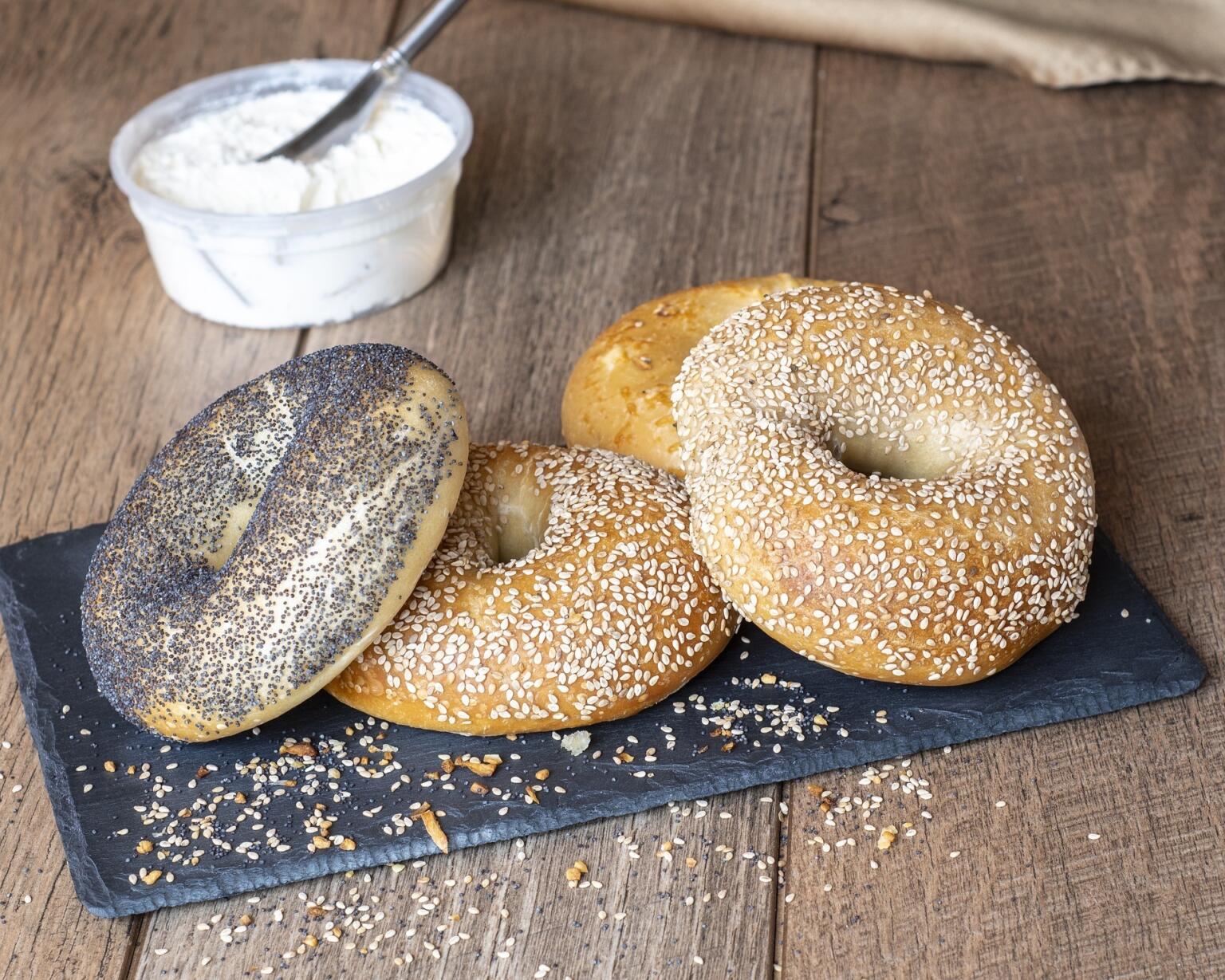
9. Get Cultured!
Referred to as Canada’s Cultural Capital, Montreal has characteristics of any metropolis, but being at the confluence of French and English traditions makes the city rich in multiculturalism and abundant in intellectual life.
Place des Arts is a major performing arts center and the heart of classical art for MTL, like the orchestra and ballet.
Music is wildly popular with concerts and music festivals popping-up throughout the summer like the Montreal International Jazz Festival—the largest in the world.
Just for the Laughs, the largest comedy festival on earth, is a must-do for all comedy junkies. It should come as no surprise that Cirque du Soleil is based in this northern metropolis.
A vast network of museums, art galleries, and exhibitions are available for the artsy-fartsy types. Be sure to check out the Montreal Museum of Fine Arts and peruse the streets to see Montreal’s awe-inspiring street art.
North America’s Sin City has a hugely popular nightlife scene. Oddly enough, Montreal is also known as the city of a hundred steeples and is renowned for its churches.
Downtown’s most commercial street, Rue Sainte-Catherine, extends to the center of Montreal’s vibrant Gay Village.
Cultural communities are host to many parades each year, and plenty of ethnic cuisines can be found in the city.
Each year, Montreal is the site for the Canadian Grand Prix of Formula 1, a high-profile auto racing event. Oh, and there is hockey. Lots and lots of hockey.
10. The Underground City
RÉSO, commonly referred to as The Underground City, is the name given to the underground connections between the buildings that compose the core of Downtown Montreal (central business district).
The CBD consists of hotels, shopping centers, commercial complexes, office towers, convention halls, universities, and art venues. In addition, the Montreal Metro (underground rapid transit system) has been fully integrated into the Underground City.
As is the case for many Canadian cities, tunnel and skywalk systems have been adopted into the downtown transit network to avoid the weather.
This proves to be especially useful if visiting Montreal during the winter months. You may not even realize you are underground, and your walk across the city may feel more like a stroll through a mall.
Montreal off the Beaten Path (More Awesome Things to do in Montreal)
This wouldn’t be a Montreal travel guide without covering some awesome off the beaten path things to do in Montreal. Here are a few options:
Go to a Festival — Montreal is teeming with epic festivals during any season! Something is always going down, so just have a look online before your arrival for festival tickets. Among the most famous events are the jazz fest, Piknic Électronik, and Montreal Completement Cirque (Montreal Circus Festival).
Sporting Event — Are you really in Canada if you have not seen a hockey game? Go watch the Montreal Canadiens play or head to a sports bar to show your support. Not an ice hockey fan? (That’s weird.) There are endless sporting events to check out like the Canadian Grand Prix (Formula One racing), cycling, and the Canadian Football League just to name a few.
Food Tour — The best way to experience any city is to taste its culinary heritage. Local Montreal Food Tours hosts several walking tours that allow you to delve into the city’s history, delicacies, and of course, craft beer. Yum!
Comedy Show — Canada’s comedy capital is home to several prominent Quebec artists and humorous groups. In Montreal, comedy is king, so see some hilarious performers at the comedy clubs. If you are lucky enough to travel during the Just for Laughs comedy festival, you would be kidding yourself not to go!
The cost of living in Montreal, the Paris of the Great White North, is surprisingly not as pricey as one may think. Having earned itself a reputation for great food, wild festivals, hot clubs, and winter sports; it is possible to indulge in these distinct Quebecois experiences without breaking the bank.
A daily budget of $80 CAD ($60 USD) is recommended for backpacking Montreal.
Backpacking Montreal on a budget is easy if you are wise with your flights and accommodation.

Luckily, long-distance trains/buses can get you to Montreal from other Canadian cities and the United States, for a low price.
Try purchasing flights to Toronto or NYC; it will probably save you several hundred dollars. Then take a train for the last leg of your journey.
Visit Montreal during off-peak seasons to save a wealth on accommodation. Often, rooms fill-up well in advance for festival season, so either pre-book your spot or try Couchsurfing for a more intimate stay in La Metropole.
Need help deciding between Montreal or Vancouver? Check out our helpful guide.
Below is a breakdown of items to consider for your Montreal daily budget.
Daily Costs in Montreal
| Accommodation | Food | Transport | Activities | Average Daily Cost | |
|---|---|---|---|---|---|
| Broke Backpacker | $25 | $15 | $10 | $15 | $65 |
| Frugal Traveler | $35 | $30 | $10 | $25 | $100 |
| Creature of Comfort | $160 | $50 | $25 | $60 | $295 |
Montreal Budget Backpacking Tips

1. Free Walking Tours: Given Montreal’s walkability, a free walking tour is just the thing you need to become acquainted with the lovely city. Tours are led by local guides that offer great recommendations, showcase unique places, and gift you a few free history lessons.
2. Free Activities: Head for Mont-Royal Park to listen to a Tam Tam jam! Parades always pass through the city—a nice way to have fun without paying. Outdoor concerts are everywhere during festival season.
Visit the Lachine Canal to find free events happening a majority of the time. Parc Jean Drapeau is a cute spot to try free dance lessons. Parc La Fontaine in the Plateau has a skating pond to check out.
3. Public Markets: Montreal is famous for its food, so make fresh, delicious meals affordable by shopping at the local markets. A picnic in Mont-Royal Park is better than a restaurant, anyway!
4. Food/Drink Hacks: Look for table d’hôte meals, which are fixed-price menus of 3 or 4-course meals, to be savored for little more than the price of an a la carte main course.
Cinq à sept is happy hour in Montreal, which happens to be a wildly popular après-work affair. Promotions at establishments throughout the city bring patrons in for cheap drinks.
5. Pack a water bottle and save money every day!
6. Free Art: Many of Montreal’s museums offer a day/time when entry is free!
Visit the collections at the Redpath Museum which never charges a fee. Majestic City Hall offers free guided tours, and gazing at incredible architecture is free of charge. Street art is hugely popular and worth seeing. Art installations are scattered throughout the city. Free, free, free!
Why You Should Travel to Montreal with a Water Bottle
Plastic washes up on even the most pristine beaches… so do your part and keep the Big Blue beautiful
You aren’t going to save the world overnight, but you might as well be part of the solution and not the problem. When you travel to some of the world’s most remote places, you come to realise the full extent of the plastic problem. And I hope you become more inspired to continue being a responsible traveller.
Plus, now you won’t be buying overpriced bottles of water from the supermarkets either! Travel with a filtered water bottle instead and never waste a cent nor a turtle’s life again.

Drink water from ANYWHERE. The Grayl Geopress is the worlds leading filtered water bottle protecting you from all manner of waterborne nasties.
Single-use plastic bottles are a MASSIVE threat to marine life. Be a part of the solution and travel with a filter water bottle. Save money and the environment!
We’ve tested the Geopress rigorously from the icy heights of Pakistan to the tropical jungles of Bali, and can confirm: it’s the best water bottle you’ll ever buy!
View on REI Read the ReviewMontreal is blessed with an endless array of lodging options throughout the island. While there is no shortage of places to sleep in Quebec’s Metropolis, staying on a budget is the real trick of the trade.
Check out our full list of backpacker hostels in Montreal for a compilation of the best accommodations for budget travellers.
For a full neighbourhood breakdown, check out our guide on where to stay in Montreal based on your specific travel needs!
The Best Places to Stay in Montreal
Are you wondering which is the best part of Montreal to stay in? Well, let me give you a few suggestions.
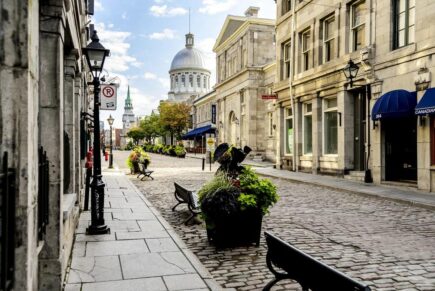
Old Montreal
Old Montreal (or Vieux-Montreal) is undoubtedly the heart of the city and is our top pick for where to stay in Montreal for first-timers. The oldest district in the city, Old Montreal was founded as a fur trading post by Samuel de Champlain in the early-17th century.

Griffintown
Close to Montreal’s main commercial areas, Griffintown is a neighbourhood with all the perks of downtown without the high prices. A former blue-collar neighbourhood, Griffintown was home to a high concentration of heavy industry and factory warehouses.

The Village
Home to Montreal’s lively LGBTQ community, Gay Village, or simple The Village (Le Village) is where you’ll find the hottest nightlife scene in town, no matter your sexual orientation.

Le Plateau
Le Plateau is one of Montreal’s coolest and most famous neighbourhoods. Known for its colourful row houses with wrought-iron staircases, this neighbourhood is home to the largest number of artists per capita in Canada.
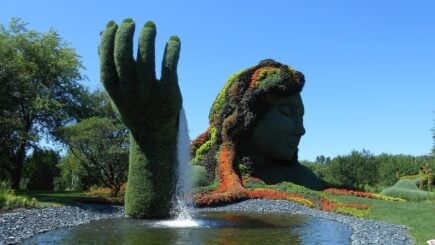
Rosemont-La Petite-Patrie
Located in the centre-east of the city is the peaceful and residential borough of Rosemont-La Petite-Patrie. Home to a series of urban villages, more than 50 parks and a myriad of community gardens, these two neighbourhoods have a very distinct vibe and flare. This area is our top pick for where to stay in Montreal for families.
How to get around Montreal
Despite the city being a booming metropolis, on the largest island in the Hochelaga Archipelago, backpacking Montreal is no-hassle with its wealth of transit options.
- Metro – Clean, safe, fast, and easy to navigate with just 4 lines connecting downtown with major sites and train/bus stations.
- Bus – STM (Montreal Transit) is a public transport agency that includes the metro and bus services.
- OPUS – Contactless smart cards used for fare payments.
- Bike – An extensive system made-up of 780 km of bike paths. Rent or bring your own to make getting around a breeze.
- BIXI – From April to November 24/7, rent a bike and re-dock it at the 600 stations within the network. Low cost and easy to use.
- Walk – You are in good company walking through this architecturally and artistically rich city. It helps that perusing is free!
- Car – Rent a car, ride-share, or hail a taxi for bopping around MTL.
Getting in and out of Montreal
Pierre-Elliott Trudeau International Airport (YUL) is the closest commercial airport serving Montreal located 20 km (12 mi) west of the city center.
Taxi prices to-and-from downtown are a fixed rate of $41; if you are not within the flat fare zone, then you will pay a metered price with a $17 minimum. The tip is not included.
STM Airport Express bus 747 offers 24/7/365 service between the airport and downtown. A single fare is $10 that includes unlimited use of the STM bus and metro network for 24 hrs.
Purchase tickets at a machine in the airport. Timetables vary according to traffic and which of the nine downtown stops you utilize (45 mins to 70 mins).
Car rental, airport shuttle, and Uber are always an option, too.
The Montreal Central Station (Gare Centrale de Montréal) is the major inter-city rail station and a major commuter rail hub.
Buses arrive and depart from the Station Centrale d’autobus, not to be confused with the central station, with extensive services to nearby major Canadian and U.S. cities.
The Port of Montreal includes the Iberville cruise terminal on the Alexandra Pier in Vieux-Port.
Long Distance Trains from Montreal
Trains are a convenient way to reach any major city in the mammoth landmass that is Canada.
VIA Rail Canada operates fast and comfortable trains to destinations in northern Quebec, New Brunswick, Nova Scotia, and along the Quebec-Ontario border.
Amtrak’s Adirondack has services to New York City that depart daily with connections to major cities in the United States. This journey is arguably one of North America’s most beautiful at an excellent price.
If you are continuing your travels to the United States, check out our East Coast and New England road trip guides!
When To Visit Montreal
Backpacking Montreal is ideal when temperatures are mild between March to May and September to November. As is common with most of Canada, Montreal undergoes cold, snowy winters, but relatively hot summers.
Montreal’s tourism industry is thriving, so summertime is peak season—characterized by inflated rates, high temperatures, and crowds. Inversely, The City of Festivals is in celebration mode with all of the hottest, big-name festivals in-full-force. The historic city can be toured solely on foot (bad pun) in the heat. Rooms for summer stays should absolutely be booked ahead of time to secure a budget-friendly price.
Spring in Montreal brings a rise in temperature allowing the city to thaw and gardens to turn green. Be forewarned that Quebec’s weather can be dicey as winter sometimes lingers into April.
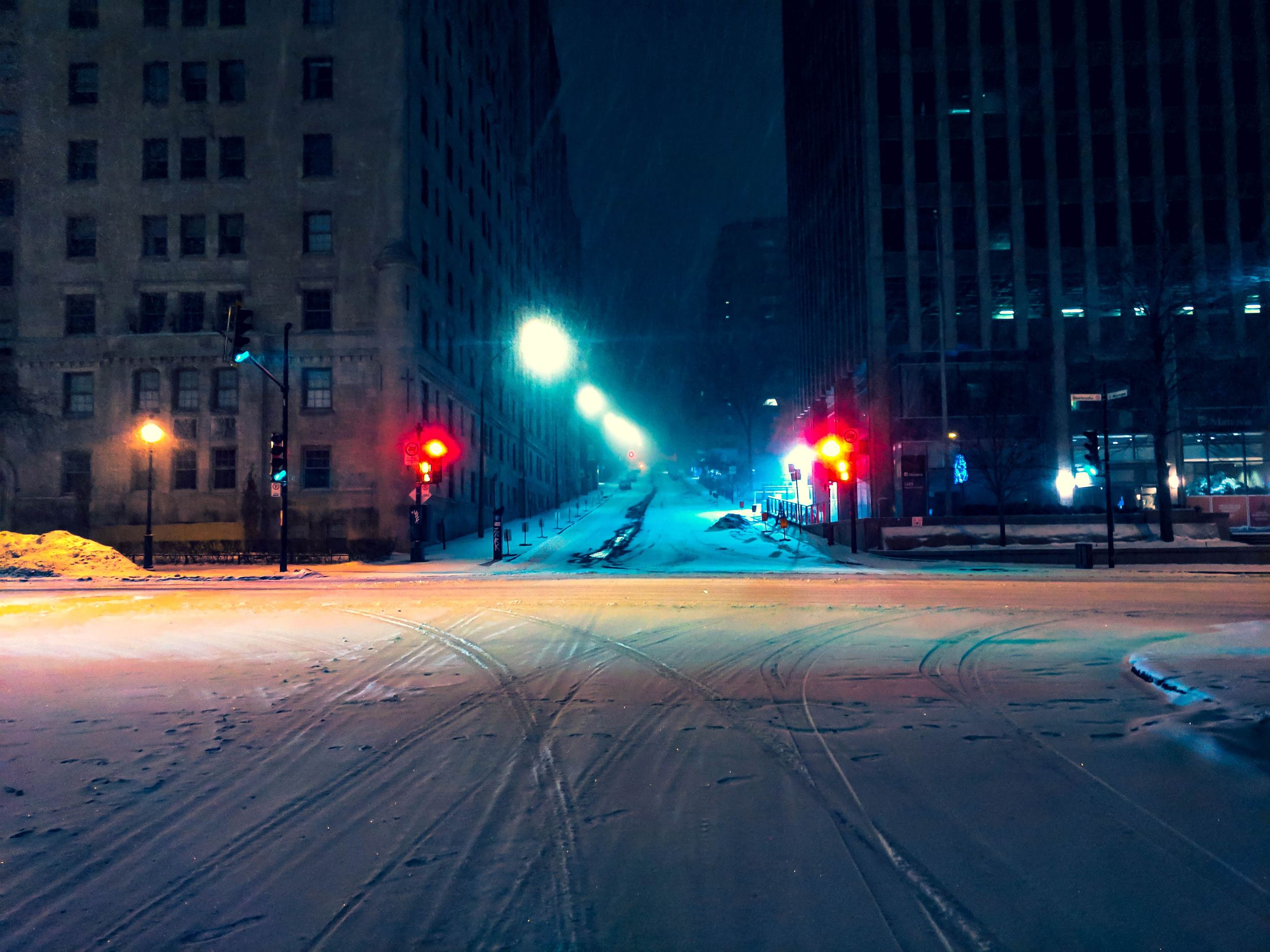
Fall in The City of Saints is overwhelmed with bright, colorful foliage. Prepare for cooler temperatures though, especially at night.
Winter on the St. Lawrence is typically cold, snowy, and icy, but it gives you a taste of true Canadian life! Reap the benefits of discounted rates and open streets, and utilize the Underground City for protection from the brisk air. This is a great chance to attempt a new snow sport that you have always wanted to try.
Staying Safe in Montreal
Montreal is considered one of the safest cities in Canada and violent crime is very rare. As a whole, Canada is an extremely safe place to travel. In case of emergency: dial 911.
Maintain safety in Montreal by using common sense. The most prevalent crime against tourists is pickpocketing. Keep your valuables close and be aware of your surroundings.
Snow and ice are among the highest ranking safety concerns if you are self-driving.
Montreal also offers a “between stops” bus service for women. In short, if the driver feels a certain stop is too dangerous for a woman at night, he/she can offer to drop this woman at a spot in-between regular stops for continued safety.
Pick yourself up a backpacker security belt to keep your cash safe on the road, and check out Backpacker Safety 101 for tips and tricks to stay safe while backpacking Montreal.
Get Insurance before Backpacking Montreal
Traveling without insurance would be risky so do consider getting good backpacker insurance sorted before you head off on an adventure.
I have been using World Nomads for some time now and made a few claims over the years. They’re easy to use, professional and relatively affordable. They may also let you buy or extend a policy once you’ve started your trip and are already abroad which is super handy.
If there’s one insurance company I trust, it’s World Nomads.
ALWAYS sort out your backpacker insurance before your trip. There’s plenty to choose from in that department, but a good place to start is Safety Wing.
They offer month-to-month payments, no lock-in contracts, and require absolutely no itineraries: that’s the exact kind of insurance long-term travellers and digital nomads need.
SafetyWing is cheap, easy, and admin-free: just sign up lickety-split so you can get back to it!
Click the button below to learn more about SafetyWing’s setup or read our insider review for the full tasty scoop.
Food and Drink in Montreal
Montreal is a culinary mecca with great food options found in every nook and cranny of the city. Undeniably, Montreal is a foodie’s heaven.
MTL offers Québécois fare, classic French cuisine, and countless ethnic restaurants from every nationality under the sun.
Life in Montreal revolves around food. Here is a little tidbit to make sure you are eating right:
Jean-Talon Market, located in the Little Italy district, is open every day (8AM-6PM) and noted for its selection of produce.
Atwater Market, located near the Lachine Canal in the Saint-Henri area, has an incredible selection of fish, cheeses, and meats.
Be sure to try regional specialties like raw cheeses, foie gras, maple syrup, and game meats like caribou.
Local must-haves include: poutine from La Banquise (or anywhere for that matter), smoked meat sandwiches from Schwartz’s Deli, and Montreal-style bagels from Fairmount Bagel and St. Viateur.
Haute cafe culture is immensely popular as we lean towards a generation of coffee producers practicing direct-sourcing from single farms. Essentially, Montreal feels the journey from bean to cup is an important one.
Buy alcohol from the government-run liquor stores called Societé des Alcools du Québec (SAQ).
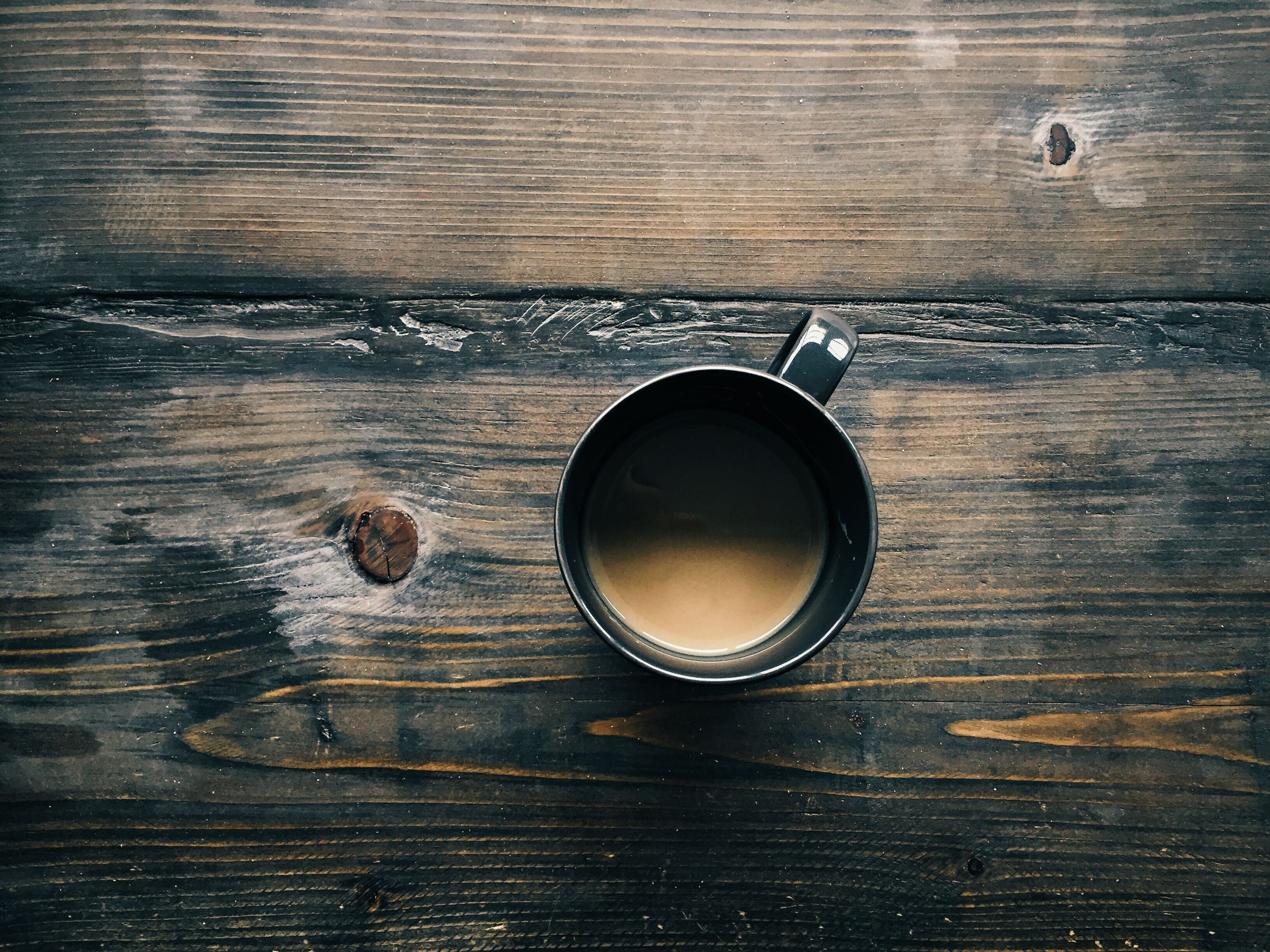
Nightlife in Montreal
Montreal is Canada’s unofficial party capital! Quebec’s legal drinking age is 18 years old—one of the lowest in North America, and a godsend to young adults from the neighboring United States.
From wine bars to live music, jazz clubs to brewpubs, and everything in between; there is a nightspot to suit any taste while backpacking Montreal.
Cinq-à-sept (5 to 7) is the way to begin your evening in MTL. Happy hour specials will save you some cash on the heavily taxed alcohol within the province. Bars typically open at 5 PM and clubs at 10 PM, while booze is served until 3 AM.
Nightlife is not only found in bars and clubs. The city is also known for having some of the biggest and best festivals on the planet. Whether you like jazz, comedy, circus, cultural events, EDM, or rock music; there is certainly a Canadian festival to get you amped-up.
Rue St. Catherine—Downtown Montreal’s main stretch, is home to a wide array of dance clubs, restaurants, bars, strip clubs, and festivals.
Rue Crescent is a great strip to search for fun. The majority of the market here is going to be 20-somethings and undergraduate students.
Boulevard St. Laurent in The Plateau district is also a hip spot to find bars, pubs, and clubs. In this area, the market is made up of young professionals, for those of you more mature travelers.
Montreal’s Gay Village or simply “The Village” is popular, vibrant, and full of fun whether you are part of the LGBTQ community or not. There is an entire section of The Village that becomes pedestrian-only for part of the year; making it super safe to wander the streets and party through the night.
Weed is legal in Canada so happy smoking, my friends.
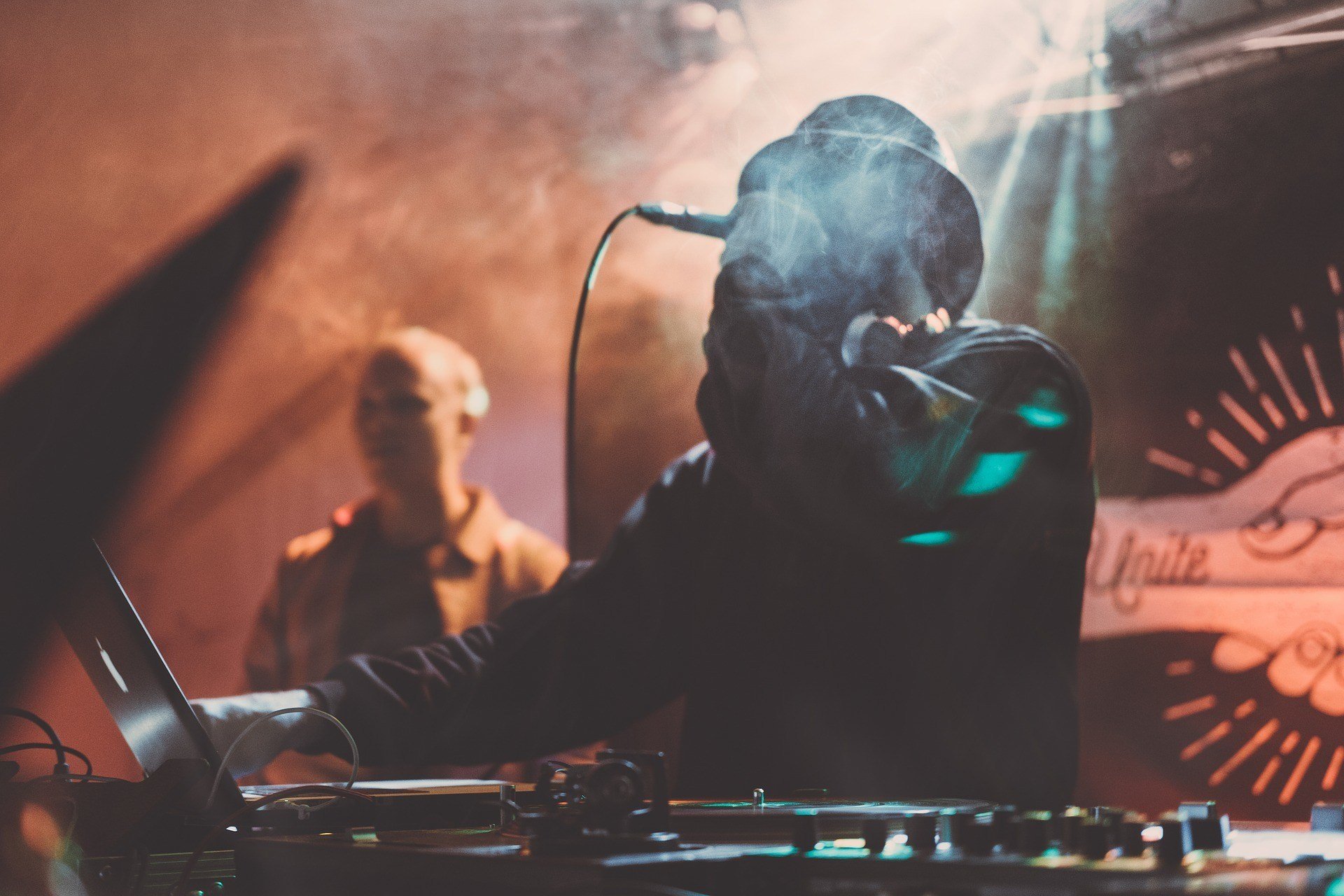
Books to Read on Montreal
Lonely Planet Montreal and Quebec City (Travel Guide) – Relevant, up-to-date travel information and advice from the world’s leading travel guide publisher, Lonely Planet.
The Tin Flute – A classic Canadian work of fiction, written in 1947 by Gabrielle Roy, which chronicles the life of a young woman in the slums of St-Henri in Montreal.
The Fat Woman Next Door is Pregnant – Michel Tremblay’s story which takes place over the course of a day in 1942, in the Plateau Mont-Royal neighborhood of Montreal, is known as a great piece of French language literature used to express the issues in early and late 20th century Quebec.
The Apprenticeship of Duddy Kravitz – This story represents the life of the poor English-speaking residents of Mile End. Mordecai Richler depicts Duddy as the third generation of a Jewish immigrant family, with funny tales and lessons learned about living in Montreal.

And for transparency’s sake, please know that some of the links in our content are affiliate links. That means that if you book your accommodation, buy your gear, or sort your insurance through our link, we earn a small commission (at no extra cost to you). That said, we only link to the gear we trust and never recommend services we don’t believe are up to scratch. Again, thank you!







